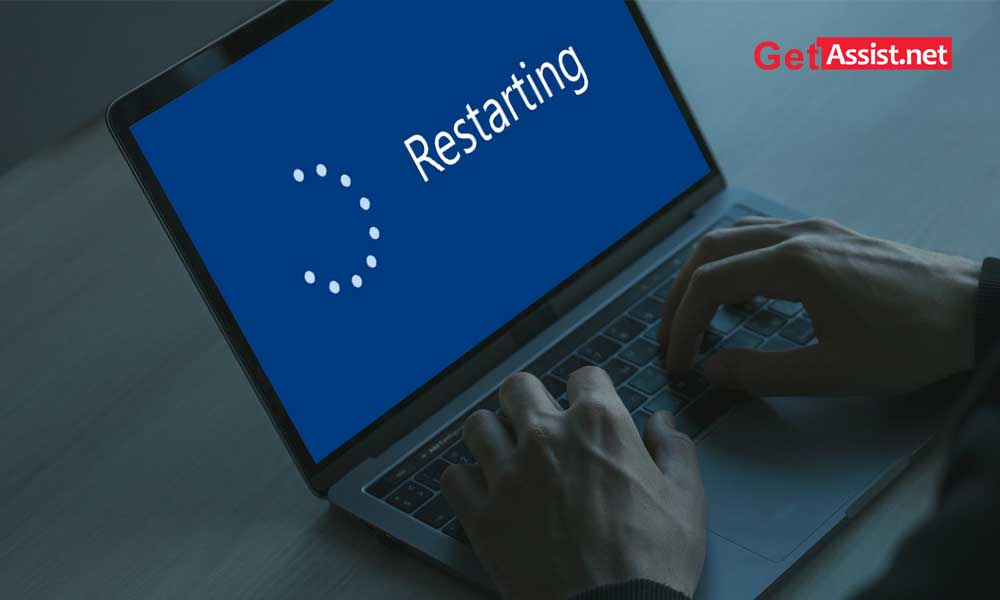Have you ever been in a situation where your computer randomly reboots, that too without warning? You must have it, that’s why you’re reading this. This morning my PC also started behaving abnormally and was randomly rebooting without giving any warning.
The error was so annoying that I couldn’t continue my work until I fixed it. So here in this guide, I have written all the solutions that can possibly fix the problem for you and will prevent your PC from randomly rebooting.
Steps to Fix Computer Randomly Reboots Automatically
If your computer randomly reboots without any warning and no blue screen, then you should try the given steps to fix it:
As the name suggests, the “Auto Restart” feature may be the reason why your computer randomly reboots. You need to check if this feature is enabled by following the given steps and then disable it:
- Open your computer’s search box and type ‘This PC’; then right click on it and select the ‘Properties’ option.

- Click on ‘Advanced system settings’

- Then click ‘Settings’ in the ‘Startup and recovery’ section

- Uncheck the option ‘Restart automatically’ and then click ‘OK’

- After doing this, your computer will stop randomly rebooting.
This could be a common reason why your PC randomly reboots without any notice; this problem is sometimes not related to the operating system you are using. Whether it’s Windows 10, 8, or 7, if your PC randomly reboots, this could be due to power issues.
To make sure this is the case, you can try changing your power cords and power supply, and then see if your computer still randomly reboots. If so, you can try the next step.
The next thing you can try is to change your power options to prevent your computer from randomly rebooting; here are the steps to do the same:
- Open the search box and type ‘Power Options’; click ‘Edit power plan’

- Click ‘Change advanced power settings’

- Click ‘Processor Power Management’ and then click ‘Minimum Processor State’; set it to a low state, such as 5% or even 0%.

- After that, try to work normally on your computer and see if it suddenly reboots or not.
Note- Updating the BIOS is a critical task and should be done under the supervision of an expert, as doing it incorrectly can damage your system.
- First, you need to identify your BIOS version; for that, press ‘Windows Key + R’ and type ‘msinfo32’ in the Run dialog box and press ‘Enter’.

- In the System Information window that opens, find the BIOS version/date and write it down along with the manufacturer.

- Next, go to your device manufacturer’s website and enter your computer’s serial number or use the “auto-detect” option.
- You will see a list of drivers; click BIOS and download the recommended update there.
IMPORTANT- Do not turn off your computer or unplug it while the BIOS is updating, as this may damage your computer. During the update, your device may reboot with a black screen.
- Once the download is complete, double-click the downloaded file to run it.
- Doing this will update your BIOS and also fix the issue where your computer randomly reboots on Windows 10 and other operating systems.
You can also try reinstalling your graphics card drivers to fix this error by doing the following:
- Press ‘Windows + R’ keys and then type ‘devmgmt.msc’ and then press ‘Enter’.
- Expand ‘Display adapters’; right click on the NVIDIA graphics card and then click ‘Uninstall’.
- Press ‘Yes’ and then go to ‘Control Panel’
- From the Control Panel, select the ‘Uninstall a program’ option
- Uninstall all NVIDIA related programs and then reboot your device, download the driver again from the manufacturer’s website and install them.
- After doing this, your computer will not randomly reboot again.
An outdated graphics card driver can also cause this problem; to fix this, you can update it by following the given steps:
- Press the ‘Windows and R’ key at the same time and when the Run dialog box appears, type ‘devmgmt.msc’ and press Enter.
- Expand ‘Display adapters’ and then right click on your Nvidia graphics card and then click on ‘Enable’ option.
- Again, right click on your graphics card and then select ‘Update Driver Software’.
- Click on the ‘Search automatically for updated driver software’ option and then wait for the process to finish.
- If it failed to update the driver automatically, click the second option ‘Browse my computer for driver software’
- Then select the ‘Let me choose from a list of device drivers on my computer’ option and then select a driver that is compatible with your Nvidia graphics card and click ‘Next’.
- Now restart your PC and hopefully this will fix the problem on your computer due to random reboots.
Methods to fix random computer reboot in BIOS and not Windows
The above steps will surely fix problems with your computer if it randomly reboots, but sometimes it can also happen that your computer automatically boots into BIOS instead of going to the Windows loading screen every time you turn it on.
If you have tried to restart your computer after exiting the BIOS and it returns to the BIOS, this problem needs additional troubleshooting. This problem has occurred with most of the operating system versions such as Windows 7, 8 or 10.
This can happen due to various reasons such as incorrect hardware connections, hardware damage, recently changed hardware, etc.
Tip: You can also try resetting the BIOS settings.
Here are some methods you can try if your computer keeps booting into BIOS:
If you have recently changed your hardware or moved your PC to a new position, most likely your PC hardware is not inserted correctly and that is why your PC boots into BIOS when you load your Windows system.
If that’s the case,
- Remove all peripherals such as external hard drive controllers, keyboards, and mice, and then restart your computer to see if this helped.
- Shut down your computer, and then remove all cables. Press the power button for a minute then plug in the cables, restart your PC and see if it boots to BIOS or Windows blue screen.
If your computer is still booting into BIOS, it may be due to incorrect boot order. You should check if there is an appropriate boot device present in BIOS; if you find one, you can set it as the primary boot option.
If you can’t find your hard drive in BIOS; make sure the drive is properly connected and working on the other computer. If it works fine on another computer, then the problem could be with your motherboard.
You can also perform Windows repair if your computer boots into BIOS automatically;
You will need a bootable USB stick or CD/DVD disc; You can also create bootable media from ISO file in Windows 10 and then boot your PC from this media.
- Click on ‘Repair your computer’ to enter WinRE and then click on Troubleshoot > Advanced Options > Startup Repair. Follow the instructions you see on the screen to finish the Windows repair process.
The last tip is to take out the CMOS battery for a while and then put it back. After that, reboot your PC and see if it boots into Windows directly instead of BIOS. You can also remove the BIOS password if you have set any and if that doesn’t help then change the battery.
Also Read: Fixed: Nothing on desktop can be clicked in Windows 10
Categories: Technology
Source: SCHOOL TRANG DAI



